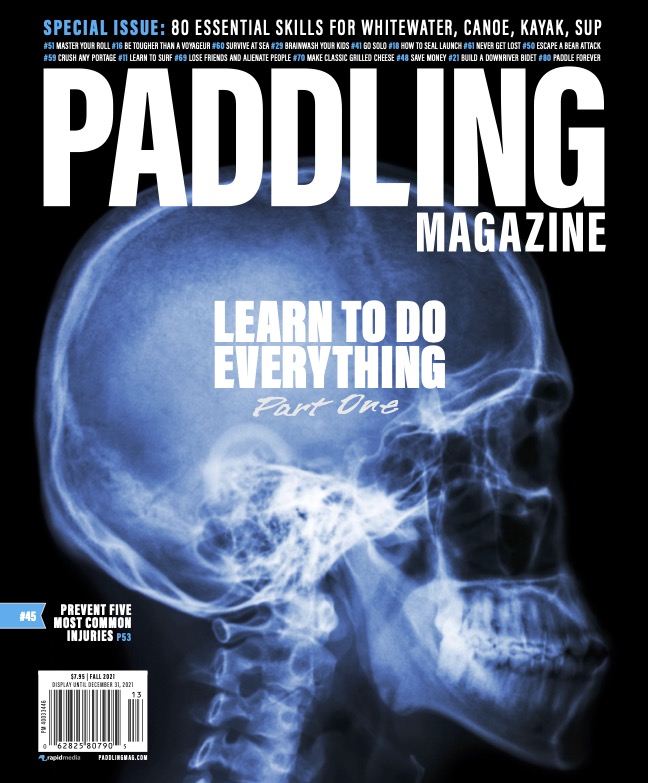Products You May Like
Solo trippers don’t have partners to lean on when things go wrong. To paddle alone you need to be prepared and attentive to every detail, because the consequences of mistakes or accidents are totally different from group tripping. Here are some tips on staying safe when solo canoe tripping in the wilderness.
8 Simple Rules for Solo Canoe Tripping
1 Wear a ditch kit
A ditch kit is a fanny pack of essential safety gear you should wear at all times. It contains everything you need to survive for a few days should you become separated from the rest of your gear. Include items like matches, emergency blanket, compass, fishing hooks and line, pen flare, knife and a personal locator beacon.
2 Tether your canoe
Tether your canoe to shore anytime you step out of it. Tether even if it is up on shore and overturned. If your loaded canoe takes a run on a river with steady current or blows away from an island campsite, you can quickly become a modern day Robinson Crusoe.
3 Bear spray and bangers
The chances of encountering a problem bear in the backcountry are minimal, but without a group to help intimidate the bear, you’ll be glad for backup.
4 Leave a float plan
Before setting out, fill out and distribute a detailed float plan or itinerary. It should include your route, when you expect to be back and the color of your canoe and tent. If you don’t return on time, authorities will have a good idea of who they’re looking for and where to find you. Leave copies with two people you trust and in your car.
5 Know when to walk
With nobody coming to rescue you or your gear if you dump, evaluate rapids conservatively. It shouldn’t be too hard to check your ego and hit the trail. After all, no one’s watching.
6 Pack a satellite communicator
This could be your only ticket home if you become immobile when alone.

7 Don’t forget to eat
Stay well nourished to stay strong and in a good frame of mind. A group shares the workload, but alone you’re battling headwinds yourself, carrying all the gear, doing all the cooking, all the cleaning and all the packing. Plan on eating 25 percent more food, and even more if traveling early or late in the year.
8 Heebie jeebies
Waking up with your heart pounding each time a mouse slowly circles your tent is no way to stay well rested. Steel yourself for the amplifying effects of solitude by paying attention to nocturnal sounds when camping with the security of a tentmate. Be mindful of how many noises there are at night, so you won’t be too surprised by your heightened perception when you are, you hope, the only human for miles.

This article originally appeared in Paddling Magazine Issue 65. Subscribe to Paddling Magazine’s print and digital editions here, or download the Paddling Magazine app and browse the digital archives here.
Tripping alone raises the stakes, so here’s how to hedge your bets. | Feature photo: Paul Epp
